DETERMINED TO DREAM
With the fate of DACA unknown, Jefferson alumni Tamara Drpić was forced to reevaluate her identity, dreams and future
February 7, 2018
Great-grandparents from Spain, Portugal, France, Germany and Croatia. Born in Bolivia. Raised in America. In many ways Tamara Drpić is the quintessential testament to the melting pot metaphor that has come to define this nation.
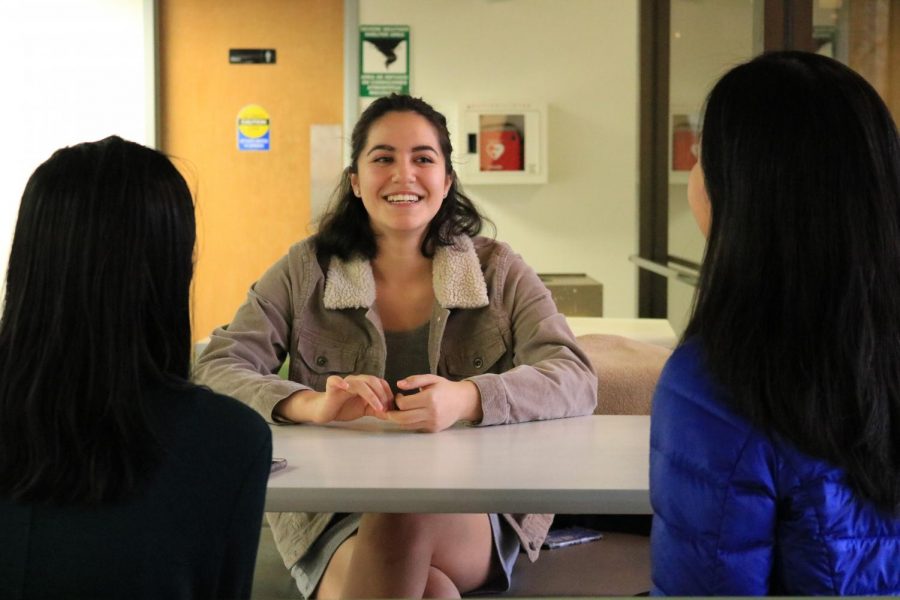
To learn about Drpić’s experiences after Jefferson, tjTODAY sat down with Drpić at NOVA’s Annandale Campus, where Drpić attends classes throughout the week.
But she isn’t American.
Not legally, at least.
Drpić, a Class of 2017 graduate, came to America at the age of five at the recommendation of her grandparents—who had lived in the country for ten years at the time of her arrival—and remained when her parents overstayed their tourist visa. She is one of approximately 690,000 undocumented immigrants currently living in the United States under DACA (Deferred Action for Childhood Arrivals). Her place in the country has become a hot button issue in American politics since the last presidential election. Now her fate will be decided in the following two days as Democrats and Republicans scramble to put together a spending deal before the government runs out of money this Thursday, Feb. 8.
The current deal on the table, a bipartisan agreement by Senate Majority Leader Mitch McConnell and Senate Minority Leader Chuck Schumer puts aside talks on immigration, as McConnell and Schumer have opted to tackle the issue through an open floor vote next week. Even following Senate approval, the deal would still need to pass the House, where it is already facing opposition. Ryan has said he would withhold support from any immigration bill that doesn’t have the majority of his party’s support while House Minority Leader Nancy Pelosi plans to vote “no” without a deal on DACA.
DACA BASICS
Undocumented immigrants are individuals that have illegally crossed the border into another country, violating the country’s immigration laws. According to the Pew Hispanic Center, these illegal immigrants numbered approximately 11.1 million of the U.S. population in 2009. Undocumented immigrants do enjoy some constitutional rights, as the 5th and 14th Amendments grant them life, liberty, and property with due process of law. However, since they did not follow a legal process to become a U.S. citizens, undocumented immigrants are subject to immigration enforcement proceedings and can neither vote in state and national elections, nor obtain a driver’s license or work permits.
President Barack Obama established DACA on June 15, 2012, through an executive action. As such, one of the chief complaints about the program is that it is an example of executive overreach. The program functions to protect undocumented immigrants brought to the United States as children. Individuals protected under the program, also known as “Dreamers,” apply to the program and, if accepted, can stay in the U.S. with a renewal of their stay required every two years.
According to the Department of Homeland Security (DHS), some of the criteria for DACA recipients includes arrival in the United States before their 16th birthday and no convictions of a significant misdemeanor or felony.
However, with a push from state attorneys general, President Donald Trump’s administration stopped reviewing DACA renewal requests last September, and as of Jan. 28, both Republicans and Democrats have been unwilling to accept compromises regarding the fate of DACA. Although President Trump’s Jan. 25 proposal included a path to citizenship for 1.8 million undocumented immigrants, it also called for aggressive cuts in legal immigration, tighter border security and enforcement methods, as well as an end to the diversity visa lottery and family migration, with the exception of spouses and children. Curbing illegal immigration has been a major focus in Trump’s presidency, especially after he rescinded DACA. If DACA expires, current recipients will slowly lose their protections depending on when they last filed for renewal.
SACRIFICING FOR NEW SCHOOLS AND A NEW START
“[My parents’] motivation for coming here was me and my brother, for our education and for our future.”
Leaving Bolivia at the age of five, Drpić did not question the transition across continents. Soon, she would come to realize that her presence in the nation was considered a violation of law. Yet it would be much later that the gravity of the situation would dawn on her.
“I realized when I was in fifth or sixth grade, and I was just like, ‘This doesn’t really feel different,’” Drpić said. “I’m just like everyone else; I didn’t feel it as a barrier at all. I would openly say it to my friends with some pride to it. I think I said it that way to show that I’m a normal person, that I’m good at school and stuff like that.”
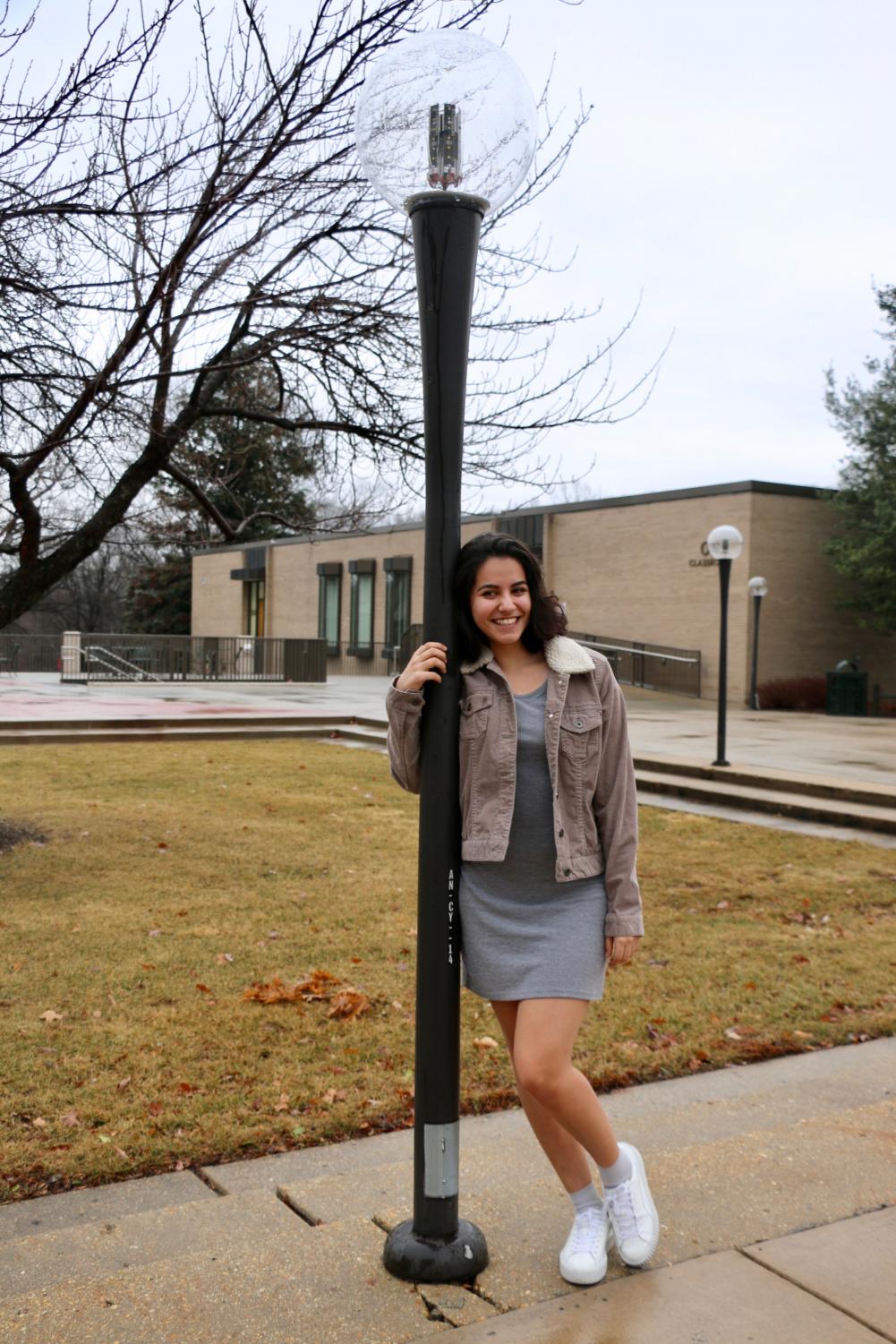
Drpić moved from Bolivia to the U.S., where she has resided for the majority of her life.
During her time in the FCPS school system, Drpić was grateful to be in a community that fostered intellectual growth, and to attend schools with resources she could utilize for her own academic pursuits–a stark contrast to the educational environment back in Bolivia.
“The schools [in Bolivia] are terrible,” Drpić said. “Even the private schools, which most people go to because they’re better, there’s a lot of drugs and alcohol.”
However, when she began to apply to colleges during the fall of 2016, barriers unique to her situation would manifest in ways she had not anticipated.
“When I started looking at the college process, I was like, ‘Oh, you have to be a citizen to get this scholarship, I have to be a citizen to get this federal aid that everyone is getting just because they’re making this much income,’” Drpić said. “That’s when I realized that being an illegal immigrant does actually affect you.”
With that realization, Drpić also saw the impact that moving to the United States and being a DACA recipient had on her family.
“My parents didn’t come here for themselves, because they had their careers [in Bolivia], they had their masters degree in marketing each, and they could have had good paying jobs,” Drpić said. “But here, my dad has to work as a contractor, and he can’t charge the same price as a normal contractor with papers can because he’s scared; he’s illegal. He can’t charge as much as he could, and he does really good work, so we don’t get a lot of money from that side. And my mom, she was lucky to find a friend who has his own company, and he hired her.”
In the time Drpić has been in the U.S., she has become more comfortable with her DACA status. Yet, this comfort began to fade with Trump’s election, which coincided with her brother’s submission of his DACA application to the DHS.
“My parents were really scared, because [my brother applied for DACA] when Trump was already President,” Drpić said. “He applied, and it took him much longer to get his papers than it took me. For me, it was really quick. For him, it took a couple months more.”
DREAMS OF DESIGNING IN ITALY
Architecture runs in Drpić’s blood. Her great-grandfather, grandfather and uncle have all been architects, so it’s no surprise that she wants to enter the field of industrial design. Yet, as a Jefferson student, she looked towards an unconventional place to study: Florence, Italy. More specifically, Florence Design Academy.
“I decided to apply there because it was Florence, Italy, and it was industrial design, which was the career I wanted to go into, and it was only three years to finish,” Drpić said.
Under previous DACA regulations, which granted students permission to exit the United States for educational purposes such as as research or study abroad programs, Drpić would have been able to study abroad without fear of being denied reentry. Accepted into the program during her junior year, she set about learning Italian in anticipation of her new home. However, the current administration’s calls to end DACA threw a wrench in her plans. Fearing that their daughter might not be able to return to her home of 13 years, Drpić’s parents believed it best if she abandoned her plans to go to Florence. The very next day, Drpić received an email from the Design Academy telling her to arrange her Visa papers.
“I was like, ‘If I can’t come back, I don’t care. I’m doing this,’” Drpić said. “I’m very stubborn. If I get my heart set on something–especially since I had known I was going to go there since junior year–I was like, ‘No, I’m going here.’”
While resistant at first, Drpić began to realize the complexity of her situation. Though her language learning books are currently going unused, she is confident her dream of studying in Florence will come to fruition one day.
“I’m going to end up studying in Italy. Even if I’m 50, I’m going to go study in Italy.”
A NEW DIRECTION, A FAMILIAR STIGMA
As Drpić’s plans to attend the Design Academy became untenable, she began her search for alternative colleges that featured industrial design programs. Schools such as Virginia Polytechnic Institute and State University (Va. Tech) have a design school, but several of their application deadlines were soon approaching and they required applicants to submit a portfolio. As a result, Drpić didn’t have time to apply.
Although Drpić could have waited another year to apply for schools in the next round–there was even a scholarship that offers to pay four years of college for DACA students–she decided against it. She didn’t want to stall her education for 1.5 years.
“I was sick of staying home and doing no schoolwork; I needed to be challenged,” Drpić said. “I didn’t want to waste any more time.”
These other schools are also more expensive, and cost was a major influence in Drpić’s decision as she would have to pay for her own education.
“My parents are optimistic. They’re like, ‘We’ll help,’ but I know they can’t,” Drpić said. “My dad sometimes has to borrow money from me.”
Thus, Drpić considered the benefits of attending Northern Virginia Community College (NOVA). NOVA does not have industrial design, so she expanded her career options and looked into architecture. Studying at NOVA would allow Drpić to gain more work experience, which she stresses is very critical for architecture majors.
“With two years at NoVA, I can immediately go work at an architecture firm,” Drpić said. “That way, I can work while I’m in college and out of college.”
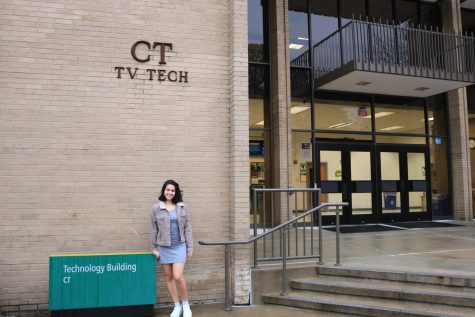
While at NOVA, Drpić takes classes that allow her to dive into the field of industrial design, including architectural graphics, computer-aided design (CAD), and construction methodology and procedures. Most of her classes are in the TV Tech Building (pictured).
Drpić battled against a negative stigma that she felt was associated with studying at NOVA. She believes the stigma partially stems from foreign parents only recognizing top tier schools, such as the Ivy Leagues, as acceptable institutions to attend. Due to the close proximity of NOVA to her home, it detracts from the novelty of the college experience.
“At homecoming pep rallies, I remember one of the [insulting cheers] being ‘NOVA, NOVA,’ Drpić said. “That always stuck with me.”
Weighing the factors and choosing to rethink prior misconceptions, Drpić settled on NOVA and started the spring semester in January. She’s taking 18 credits, the maximum number allowed, with a course schedule of Calculus, Public Speaking, Architectural Graphics, Computer Aided Drafting and Design, as well as Construction Methodology & Procedures. The latter – her favorite class – involves learning how materials like wood and steel are used in construction. Though this came completely unexpectedly, Drpić loves studying at NOVA and enjoys its diverse student population.
“There’s people from all paths in life; there are 14-year-olds in my class, and there are 60-year-olds in my class,” Drpić said. “In my architecture classes, there are people who have been in architectural firms. They know what they’re doing. I can learn a lot from them, more than I can learn if I were in a class of all freshmen who are all at my level.”
According to Drpić, the people at NOVA are nice and driven, but in a different way from Jefferson. Instead of competing for grades and acceptances into top universities, NOVA fosters personal and academic growth caused by a pure interest in learning.
“I feel different [at NOVA] and I think that’s part of the TJ me,” Drpić said. “I will always feel a little bit snobby here. Always. But at the same time I am humbled.”
Drpić feels that NOVA is similar to other universities. It’s not for everyone, and lacks a social scene, but she likes it. Drpić encourages students who want to apply to community colleges, but feel that there is a negative attitude towards these schools, to give NOVA some serious consideration.
“Just [apply to NOVA]. Don’t listen to everyone else,” Drpić said. “You’ll find people that are very driven here and you’ll be very good wherever you are. All the students at TJ are very driven; they’ll get where they want whichever path they decide to take.”
FIGURING OUT HER FUTURE
In the five months since Drpić had to let go of her dreams of studying in Florence –at least temporarily– she has learned the importance of being flexible.
“Whenever you think a plan is so certain, it’s just not. No plan is certain, ever,” Drpić said.
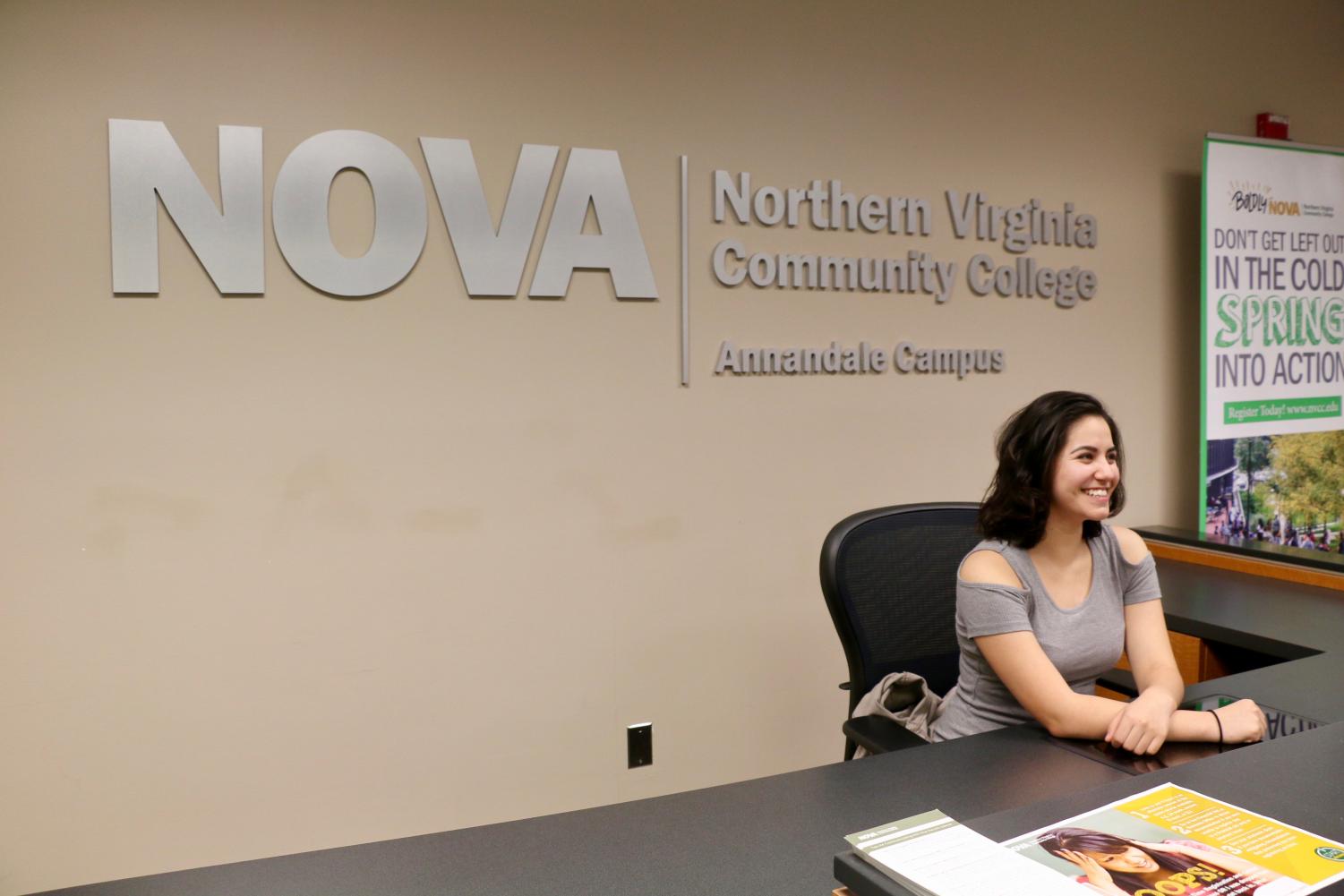
Drpić didn’t think she would end up at NOVA, but now loves studying at the school.
For someone who has learned about the uncertainty of plans, Drpić is still making them. Hers have to factor in not only her undocumented status, but her long-term boyfriend, Travis Richardson. Moving forward, she hopes to complete her education at the University of New Mexico, one of the few schools that accept an architecture degree from NOVA through the school’s guaranteed admission agreement.
“I had never heard of it,” Drpić said. “But then I looked at NoVA and they had the guaranteed admissions and they have this scholarship at the University of New Mexico that gives transfer students in-state tuition. Which is only $6,000 and they give them a $200 pension per semester.”
Drpić is still unsure whether she will finish her two years at NoVA and go straight to the university to finish her architecture degree, or stay here and work for two years as Richardson finishes his degree at George Mason University. Whatever path she chooses, Drpić seems confident that either option has merit in helping her ultimately find work in industrial design.
“With two years at NoVA, I can immediately go work at an architecture firm,” Drpić said. “In the architecture realm that’s really important, more important than getting your degree.”
However, Drpić aims beyond working in an architecture firm. She hopes to create sustainable, eco-friendly and inexpensive homes for impoverished communities. Before she does that, she hopes to live in such areas to work for and not impose upon them.
“I wanted to be able to live in these poor places and get the feel for the culture, the people, and cater to their needs. In architecture, every culture needs different things,” Drpić said. “I want to go into a place and live it. I don’t want to go in there and be like ‘This is how you do it.’”
TO BE OR NOT TO BE: AMERICAN
Drpić experienced a little identity crisis a couple of months ago. After all, her diverse background makes it hard to encapsulate her in one word. Drpić is a Dreamer, in more ways than one. She is a Jefferson alumni and a NOVA student. She is driven, curious and loves STEM. She dreams of fulfilling her passions of designing and building, marrying and creating sustainable homes for the impoverished.
What remains up to the interpretation, and is ultimately subject to the rulings of the U.S. government, is whether she is American. In the past few months, her undocumented status has come to influence much of her identity, past and future.
“By blood I am mostly European. By birth I am Bolivian. By living I am American. I would most likely call myself American, but I don’t know if that would be accurate. It’s something I’m figuring out still.”
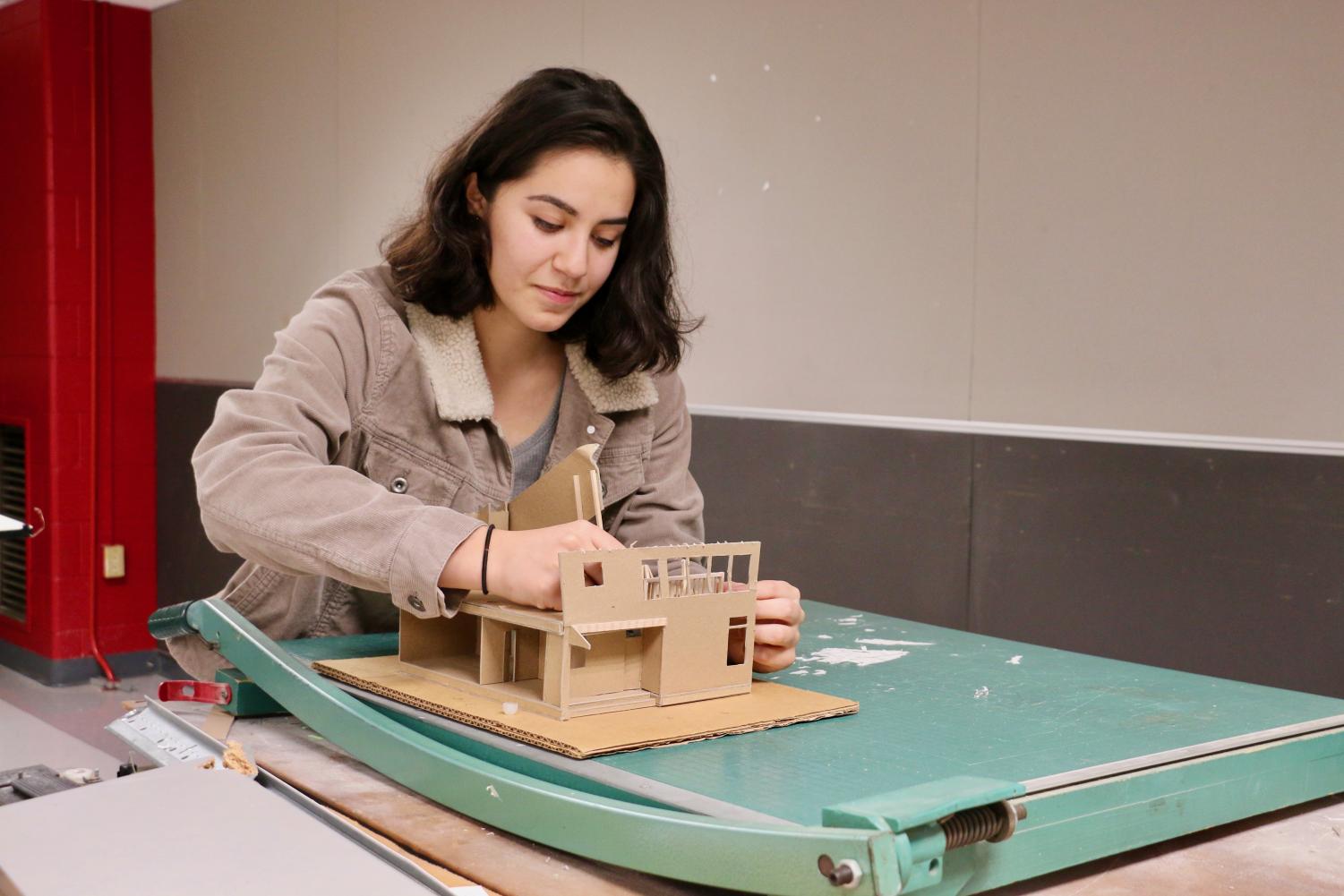
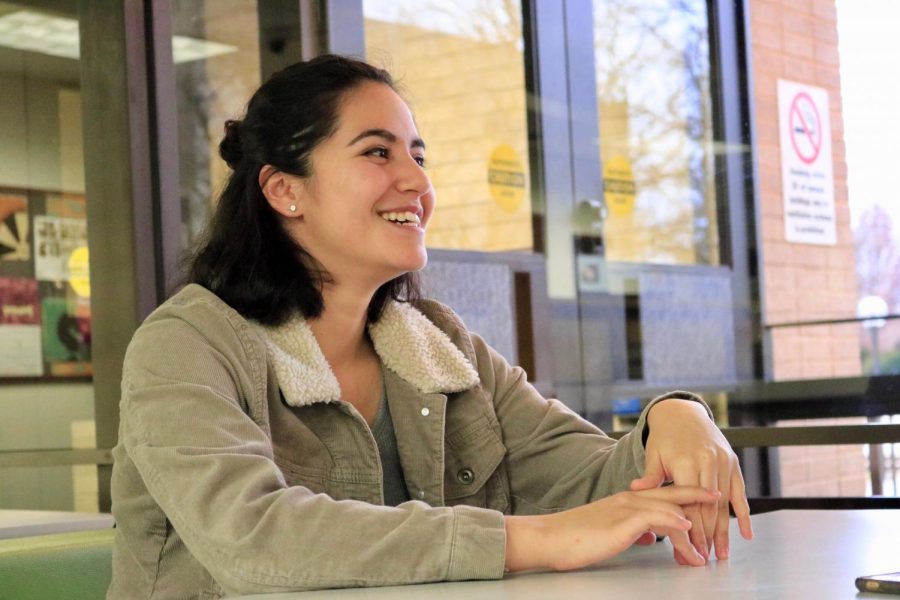
ANON • Jun 25, 2019 at 10:26 pm
GREAT ARTICLE, KATHERINE!